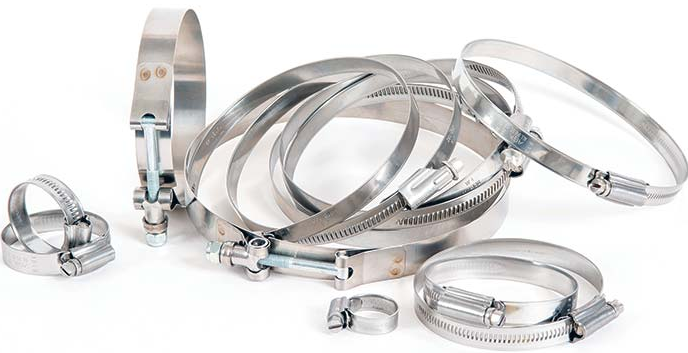
How To Choose A Hose Clamp To Suit Your Purpose
Hose clamps are a type of clamp made of metal or plastic that is used to compress two hoses together. The hose clamp is typically fastened by turning a screw or bolt that presses the two ends of the hose together to prevent leakage. Hose clamps can also be used for other applications, such as holding water pipes together or sealing off sections of pipes.
Hose clamps come in different sizes and configurations depending on the application they are being used for. The most common types include:
- Band clamps
These are simple wire bands that tighten around the hose and compress it closed. They can be adjusted by loosening one end and re-tightening it until it’s snug against the hose. Band clamps are often used with rubber, plastic or fibreglass hoses. They are not designed for use on metal hoses because they wear out quickly and may not be able to create enough pressure on the hose to seal properly.
- Hook & Loop Clamps
This type of clamp has two parts — one with hooks at one end and one with loops at the other end. When these two parts are pressed together, they grip each other tightly enough to create pressure on whatever they’re being used on (typically a pipe).
- Coupling Clamp
This type of clamp has two jaws that grip the hose at multiple points along its length, making it more secure than a simple band clamp. A coupling clamp can be used for both small and large-diameter hoses, but it requires a special tool for installation and removal.
- Worm Gear Hose Clamps
Worm gear hose clamps are the most commonly used type of clamp on the market today. They consist of a metal band that has teeth on it and a threaded ring that screws onto the fitting being secured. The band is tightened around the fitting by turning the threaded ring until it stops turning and then tightening with another wrench or socket wrench. The teeth on the band bite into the rubber to secure it in place.
- V-Clamp
V-clamps are also called “grip” style clamps because they feature a sliding jaw that closes around an object and tightens with pressure from above. V-clamps are commonly used for securing pipes together and attaching hoses to liquid containers like fuel tanks.
How To Choose The Right Size Hose Clamp
Choosing the right clamp can save you time and money in the long run, so it is important to consider the following factors before purchasing one:
- The Type Of Hose
The first thing you need to do is figure out what type of hose you need. There are three main types of hoses: rubber, synthetic and stainless steel. Rubber hoses have a flexible outer layer that contains steel or plastic reinforcement inside, whereas synthetic hoses are made from various plastics. Stainless steel hoses are often used for high-pressure applications because they don’t corrode easily as rubber, or synthetic ones do.
- Material
Hose clamps are made of different materials, such as brass, aluminium and stainless steel. Brass hose clamps are relatively inexpensive, while aluminium and stainless steel ones are more durable and stronger than brass ones. You should consider the type of project you want to use the hose clamp on before making a decision on which material to choose.
- Size
The size of the clamp will determine how much pressure it can withstand before it fails. If you need to attach two pieces of tubing together where high pressure is involved, then you should choose a large clamp made from strong materials such as steel or aluminium. If you only need to prevent leaks at low pressures, then smaller plastic or rubberized clamps may suffice.
- Thickness/Width
Hose clamps come in different widths depending on their material type: solid metal ones are usually 1/4 inch wide, while plastic ones vary from 0.5 inches thick to over 1 inch thick! Choose the one that suits your needs best!
- Tightness Level
Another thing that you must take into consideration when purchasing a hose clamp is how tight it will be when fastened onto your hose system or any other type of equipment. If the tightness level is too high, then it may cause damage to the equipment itself by causing leaks or even breaking down its parts together!
Conclusion:
Hose clamps are important for their utility and are relatively cheap to purchase. They will protect your hose from wearing out, which can be expensive if the hose is new, but you’re trying to save money by putting it to work prematurely. However, it’s hard to tell which hose clamp is right for your needs without specific information on the size of your hose, the expected load on the hose, and the type of water. This guide should help you choose your clamp more easily.
